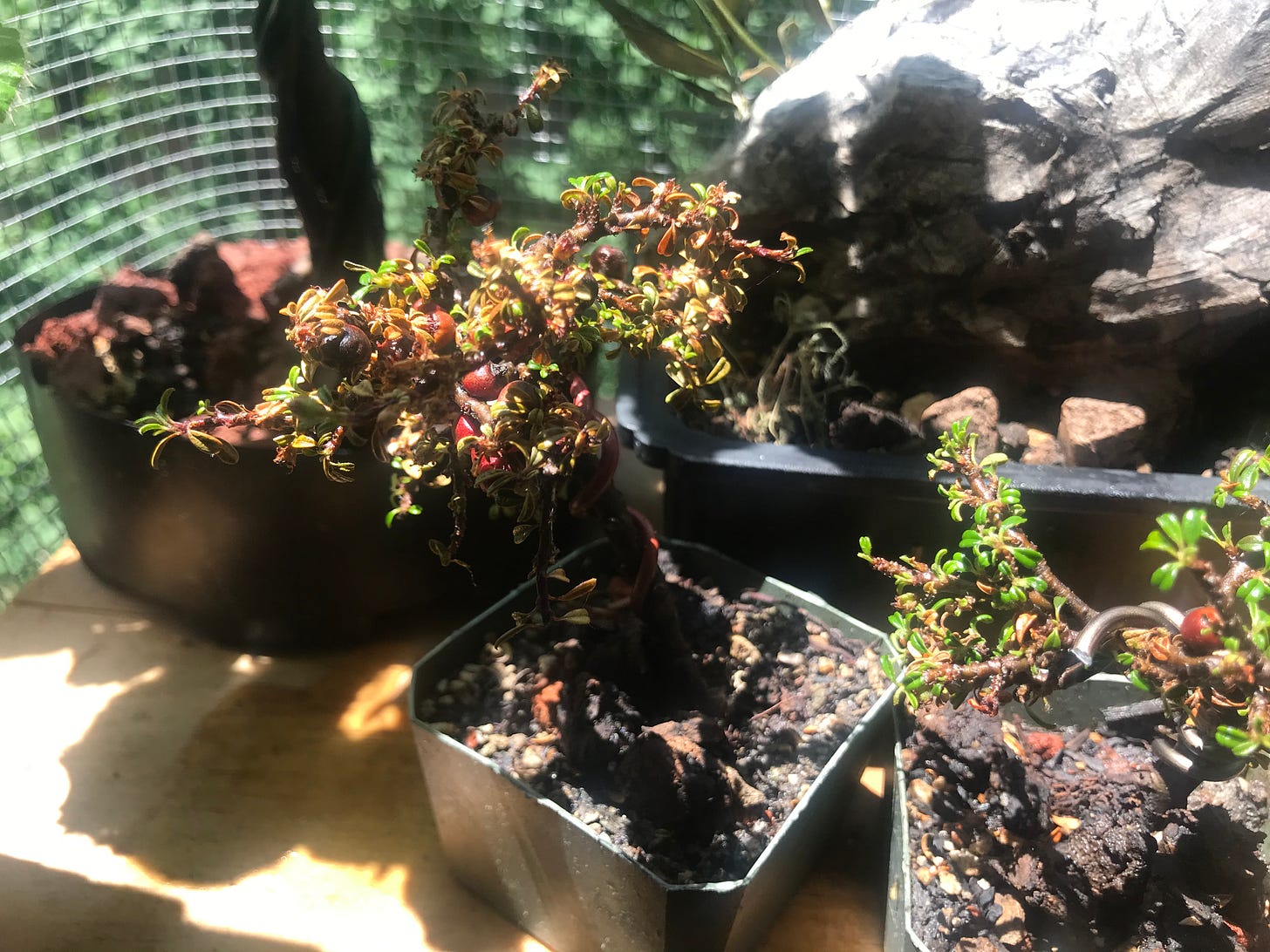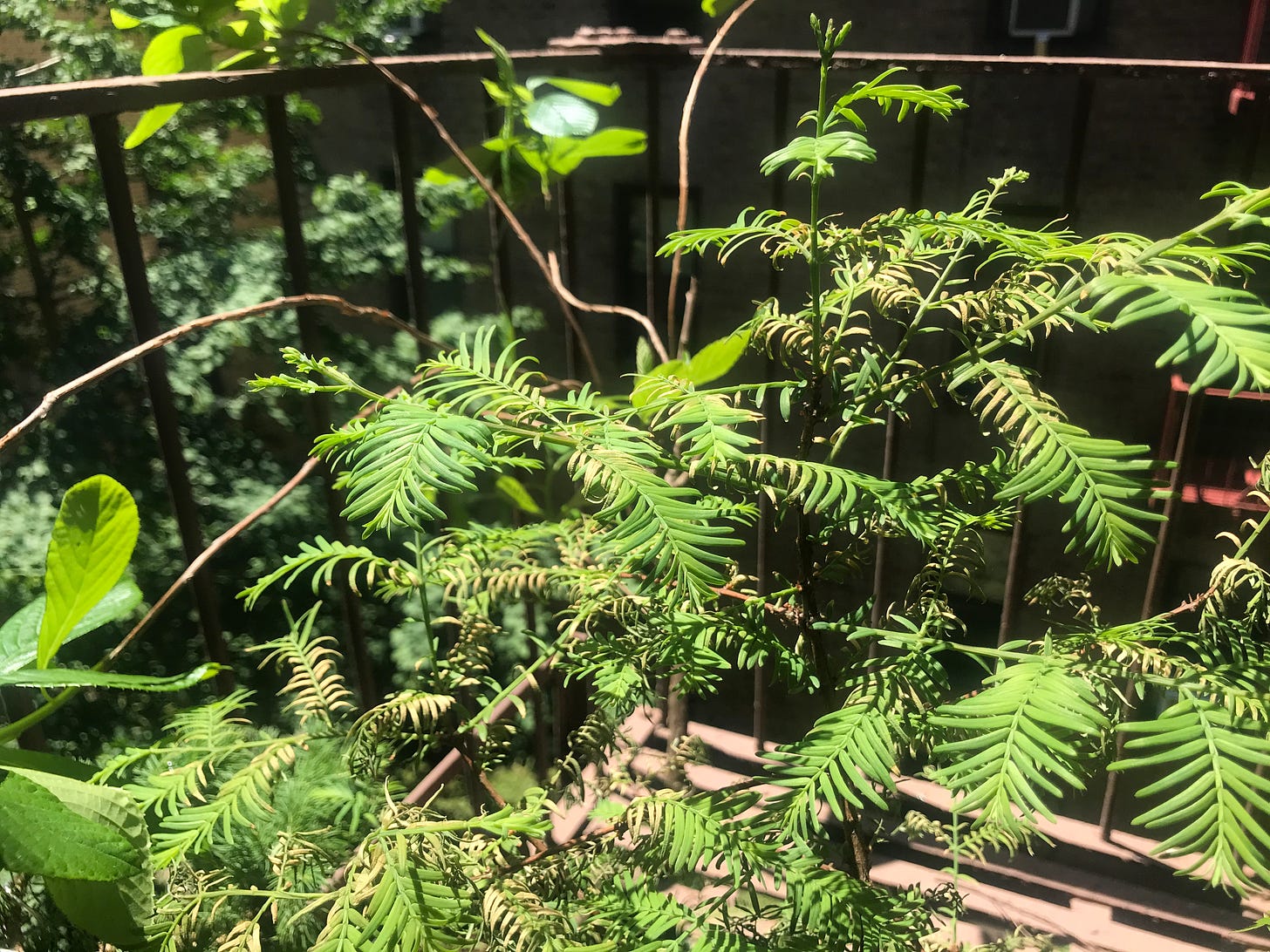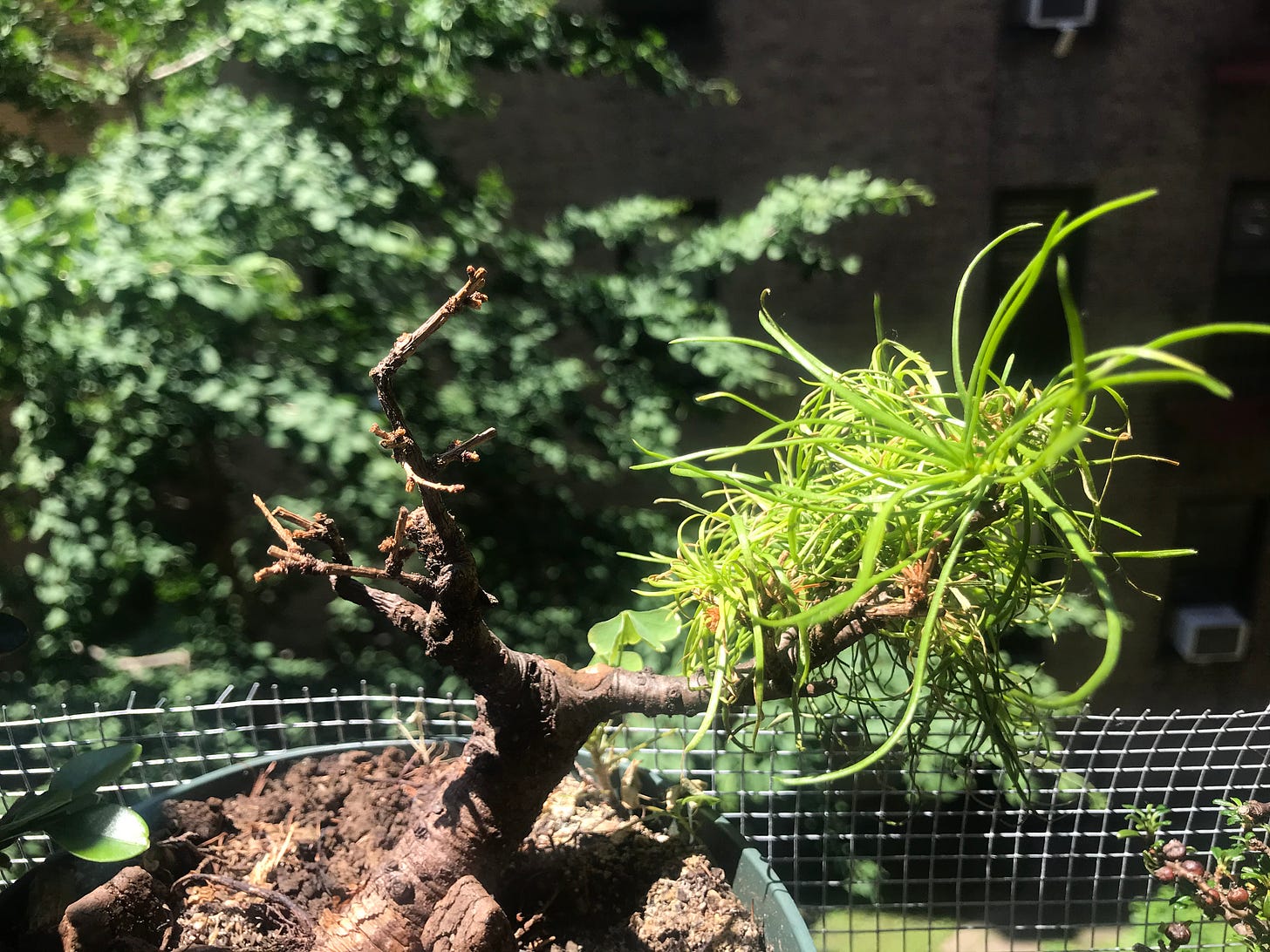Spider mites are teensy arachnids that traverse through the air like Spider-Man, weaving web-like filaments as zip lines and anchors to carry them on the breeze. When they find a suitable plant, they bite down into the undersides of its leaves and suck away at its juices. When the leaf succumbs, it turns yellow and dies. The spider mites breed fast. The eggs hatch quickly. They gather more filaments into stray puffballs. By the time you notice the yellowing leaves and gathering webs, the infestation is deep.
The spider mites hit hard this week, infesting the two cotoneasters shown above. By the time I noticed them they’d already made inroads onto a third tree. These tiny trees are a new addition to my collection. They have adorably proportioned leaves and put out cute white flowers and vibrant red berries.
Denial is an almost reflexive instinct. It’s easy to pass by and notice the berries look shriveled compared to yesterday. They’re probably fine, I thought, it’s been hot. Eventually the spider mite webs were impossible to ignore.
There is an easy treatment for spider mites: neem oil diluted with water and mixed with a few drops of soap, sprayed on the infested plant until it’s drenched. Neem is a Swiss army knife of the organic garden that blocks the respiratory passages of spider mites and their eggs, suffocating them in their exoskeletons. The deeply yellowed cotoneaster above has months of recovery ahead, if it survives at all. The lethality of neem offers some comfort.
My dawn redwood that I waxed poetic about last Friday is also in trouble. While taking photos I’d noticed that some of the leaves had shriveled up. This week the shriveling has spread across the whole tree, and some leaves are turning brown and crispy. Never do bonsai. A tree can break your heart.
I’m still working out the nature of my feelings for the plants in my care. It’s different from my feelings for people or pets or ideas or myself. I don’t have a human word for it yet; the relationship is more biological. But it’s undeniably significant. As the trees have wilted, so have I. The week has found me irritable. I’m smiling less.
Research and my bonsai rabbis suggest that the problem is one of arid air and insufficient water. So I’m increasing my watering, now a daily part of my morning routine. I’ve also rearranged the trees on the fire escape to give the redwood some protection from the drying force of the wind.
Half of my larch is growing wild. Unfortunately it’s the half I wanted to eventually carve into a deadwood spur, leaving only the left branch to produce foliage. What few buds that branch set in spring died before they could break. When I scrape the bark with my fingernail I can still see green cambium underneath, so all isn’t lost, but part of it sure is.
I don’t know if the error is the previous owner’s or my own, but my rabbi thinks the issue is rotten roots. The soil in this pot is moisture-rich and compacted, which can literally drown roots of necessary oxygen. For now all I can do is wait and see what happens. Next year I can repot or change my style strategy.
This larch may not turn out the way I wanted, but it may survive. All these damaged trees may. Trees are at once vulnerable and resilient. I’m starting to understand that this duality is what gives bonsai its raw beauty. Like eggshell-thin porcelain, the fragility is the point.
The older I get, the more sure I am that I don’t want kids. I mean, who knows! But I’ve never gotten the warm fuzzies from sniffing a baby’s skull and I don’t relish the idea of raising a new human life. For the most part I’m very comfortable with that. I have supportive friends who feel the same. Still, doubt creeps in, especially as more breeders in my life pair off and spawn. Is there something wrong with me that I don’t feel an instinct to nurture a child?
Plants aren’t children. But they are something. I need to dwell more as to what. For now they remind me that there are many ways to nurture. There’s nothing wrong with me. There is plenty of life to cultivate in the world.
Tree reading
Since 1904, a fungal blight introduced to the US from Asia has nearly killed off chestnut trees along the East Coast. A Native-led group of activists and scientists is trying to bring the chestnut back. [Smoky Mountain News]
Investing in birch and beech syrups could make maple syrup producers’ forests more resilient. They also taste incredible. [WBUR]





